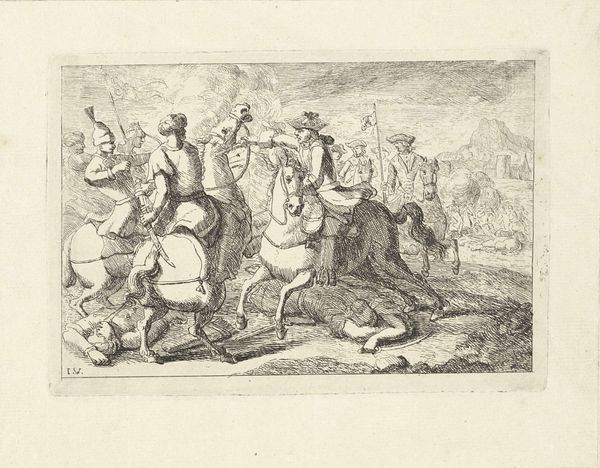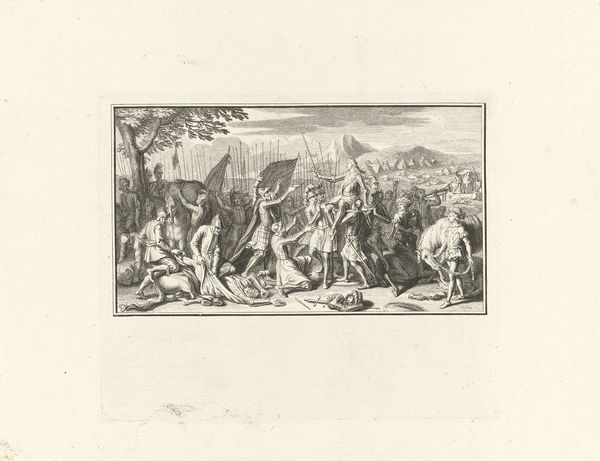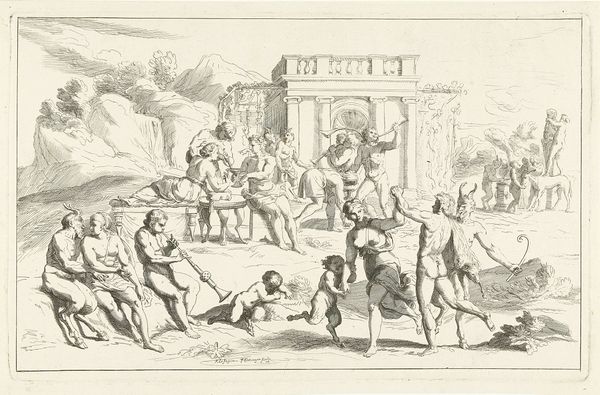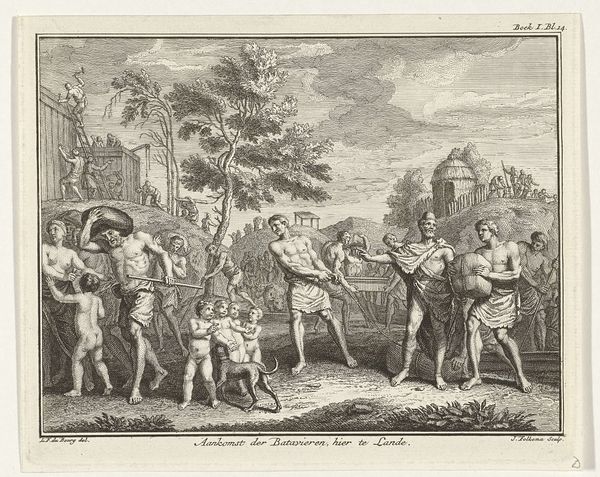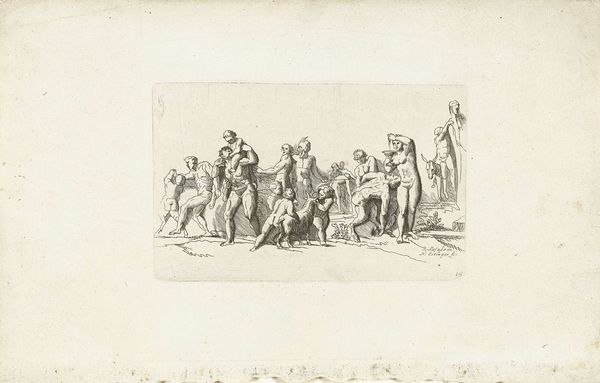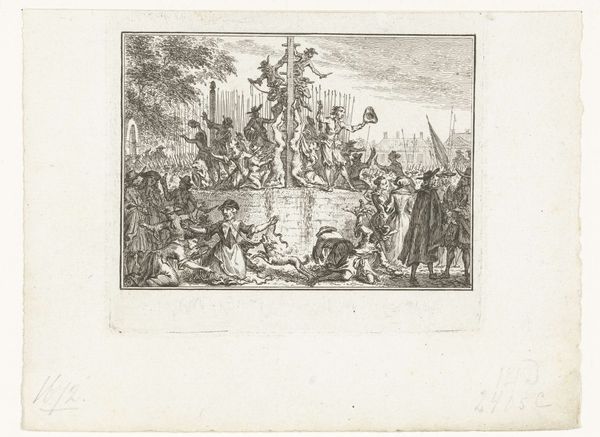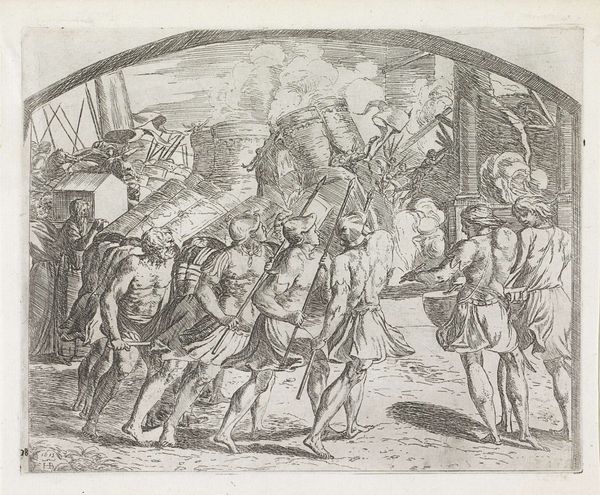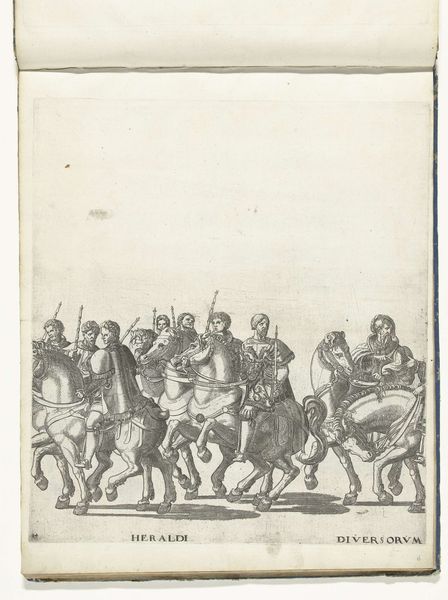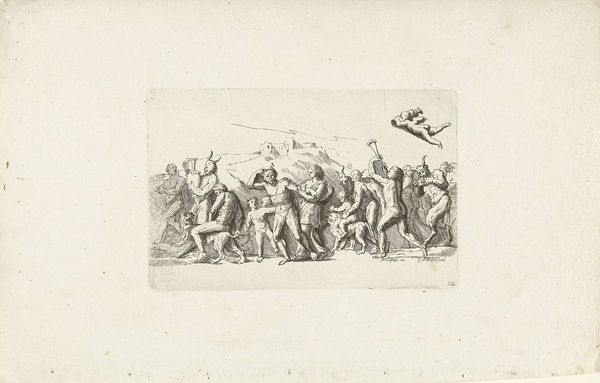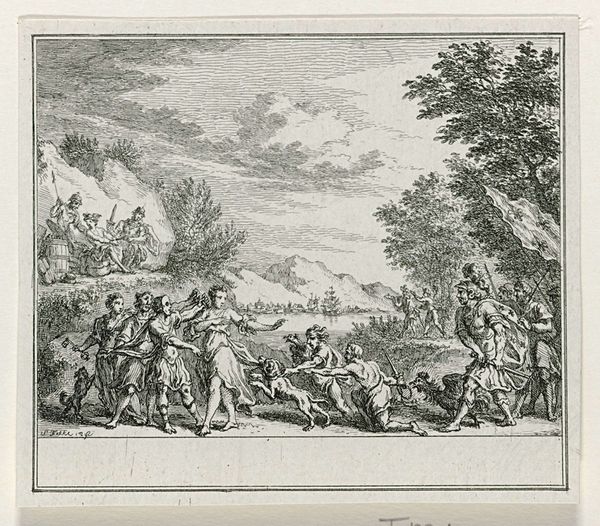
print, engraving
#
allegory
#
baroque
# print
#
figuration
#
line
#
history-painting
#
engraving
Dimensions: height 116 mm, width 204 mm
Copyright: Rijks Museum: Open Domain
This etching by Franz Ertinger, created around 1640, depicts the Triumph of Bacchus and Ariadne. The god of wine and his bride are carried aloft, a scene brimming with symbols of fertility and ecstatic release. Note the bacchantes and satyrs, motifs echoing back to ancient Greece and Rome, where such processions celebrated Dionysus, Bacchus's earlier incarnation. This motif experienced a resurgence during the Renaissance, embodying the liberation of human spirit. The image invokes what I call 'energetic traces’ – those primal urges toward revelry, translated across eras. Observe how the classical portrayal of the divine evolves; in Renaissance art, figures become less austere, more human, reflecting a changing cultural psyche. This triumph is not merely a scene but a resurfacing of deep-seated desires, a cultural memory asserting itself. Note the cyclical recurrence of symbols, demonstrating the eternal return of human emotions.
Comments
No comments
Be the first to comment and join the conversation on the ultimate creative platform.

